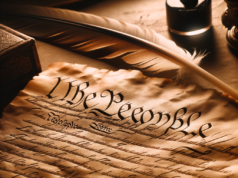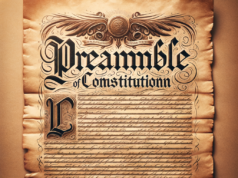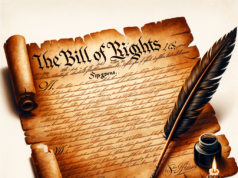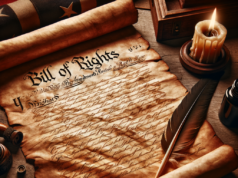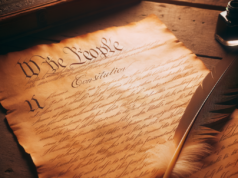Table of Contents

The United States Constitution is the supreme law of the land and is the backbone of the American government. Written by a group of brilliant minds over 200 years ago, the Constitution has provided a framework for democracy and continues to guide the nation’s policies and principles.
The Constitution was written in 1787 after a long and heated debate among the Founding Fathers. The document took four months to complete and was signed by 39 delegates including George Washington, James Madison, and Benjamin Franklin, among others. The Constitution replaced the Articles of Confederation, which had served as the nation’s governing document until that point.
The Constitution has three main parts: the Preamble, the Articles, and the Amendments. The Preamble serves as an introduction and sets forth the principles of the Constitution. It begins with the famous words, “We the People,” emphasizing the importance of the people’s role in the government.
The Articles of the Constitution lay out the framework for the federal government. Article I establishes the legislative branch, Article II establishes the executive branch, and Article III establishes the judicial branch. Each branch has specific powers and responsibilities, and they work together to form a system of checks and balances.
The Amendments to the Constitution outline the individual rights and freedoms of citizens. The first ten amendments, known as the Bill of Rights, were added in 1791 and include rights such as freedom of speech, religion, press, and assembly. The following amendments have been added over time to address various issues and changing times, including the abolition of slavery and the right to vote for all citizens.
One unique aspect of the Constitution is its ability to adapt to changing times. It has endured for over 200 years because it can be amended and updated as needed. However, this adaptability has also led to debate and controversy. The interpretation of the Constitution has been a topic of heated political discussion for decades, leading to landmark Supreme Court cases and changes in laws and policies.
Overall, the United States Constitution remains a cornerstone of democracy and a symbol of the nation’s values and principles. Its principles of liberty, justice, and equality continue to inspire people around the world and serve as a model for other democratic societies.
What is the Constitution?
The United States Constitution is regarded as the supreme law of the United States.
The United States Constitution is in essence, the framework for the organization of the United States government and more specifically for the relationship of the federal government with its states and citizens of the country.
The Constitution, which was drawn up by the founding fathers of the United States following the Revolutionary War, created the three branches (the legislature, the bicameral Congress; an executive branch which is led by the President; a judicial branch headed by the Supreme Court) of the United States Federal Government. In addition to the creation of such branches, the United States Constitution specifies powers and responsibilities to each branch. The United States Constitution reserves all unremunerated powers to the individual states and to the people of the nation; this relationship effectively established the democratic system of government in the United States.
The United States Constitution was adopted on September 7, 1878 by the Constitutional Convention; the document was ratified by conventions in each U.S. state in the name “of the people of the United States.”
The United States Constitution is the framework on which America’s society is based on. The Constitution awards individual citizens of the United States with undeniable rights and privileges, in addition to separating the powers of the governing bodies. Furthermore, the United States constitution developed and organized the relationship between the federal government of the United States and the localized state governments that comprise the Union. As a result of this framework, a body of law is dedicated to the United States Constitution.
Constitutional Law
Constitutional law is the body of law that deals with the distribution and exercise of a government authority.
All states in the United States possess some form of Constitution or at least a general law of the land that will consist of a variety of consensual legal issues. Such laws or rules may include statutory law, judge-made law, customary law or conventions.
Constitutional laws govern the relationship between the legislature, the judiciary, and the executive bodies within the governing system. One of the fundamental tasks of constitutional law is to indicate hierarchies and relationships of power. When a constitution establishes a federal state, the framework will identify the several levels of government which coexist with exclusive or shared areas of jurisdiction over the application of enforcement and lawmaking powers.
In addition to the organization of governmental powers, a constitution will also govern the rights of the individual citizens against the state. All states and the federal government as a whole possess a codified constitution with a developed bill of rights. This section of the constitution establishes the individual citizen’s undeniable rights and liberties. Any issues where a governing body strips an individual of these rights may be evaluated in a court of law.
The Rule of Law
The Constitution possesses a doctrine known as the rule of law, which dictates the protocol for which governing bodies and their subsequent actions must be conducted. In essence, the Rule of law is the separation of powers between different governing bodies.



